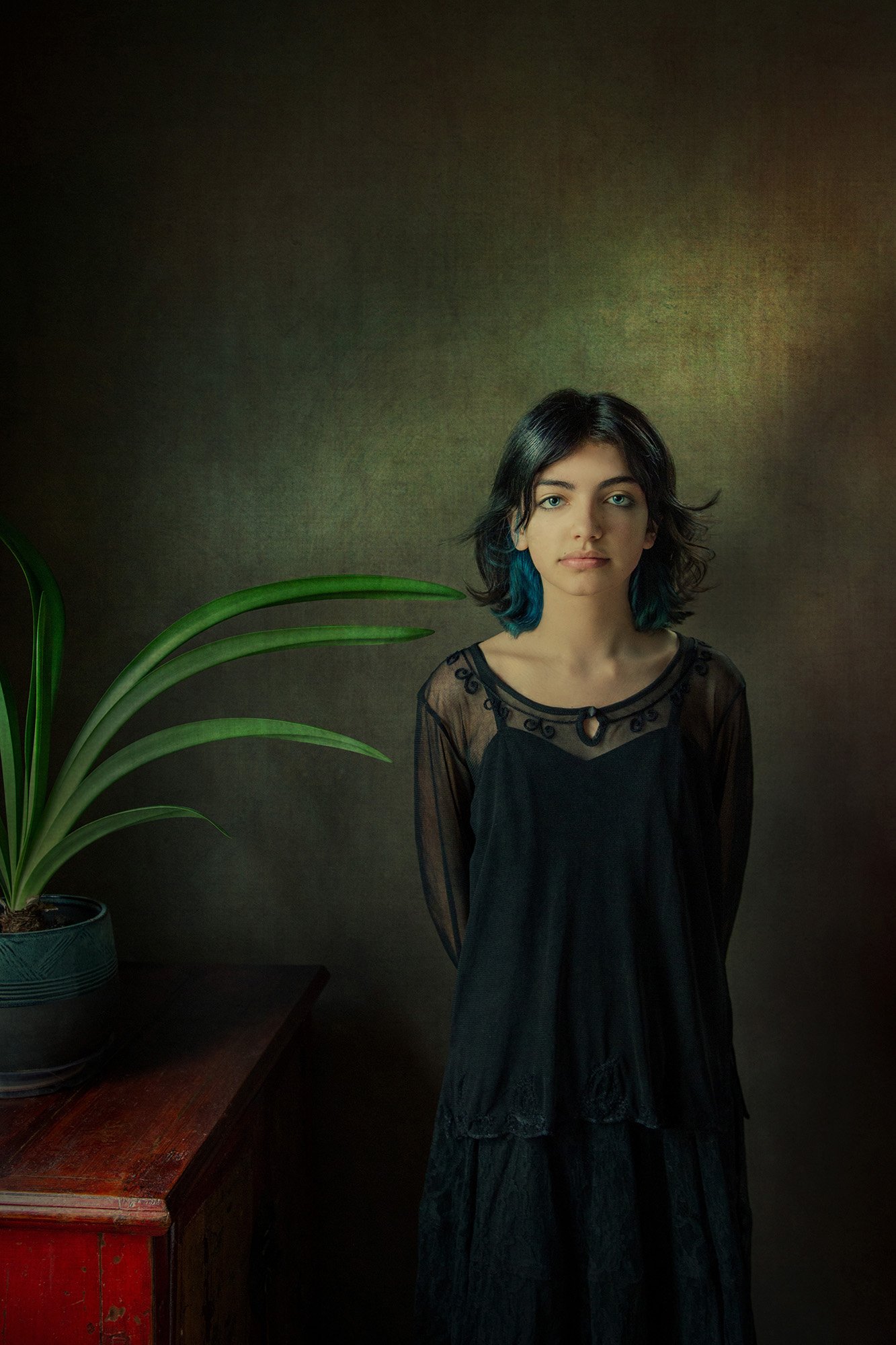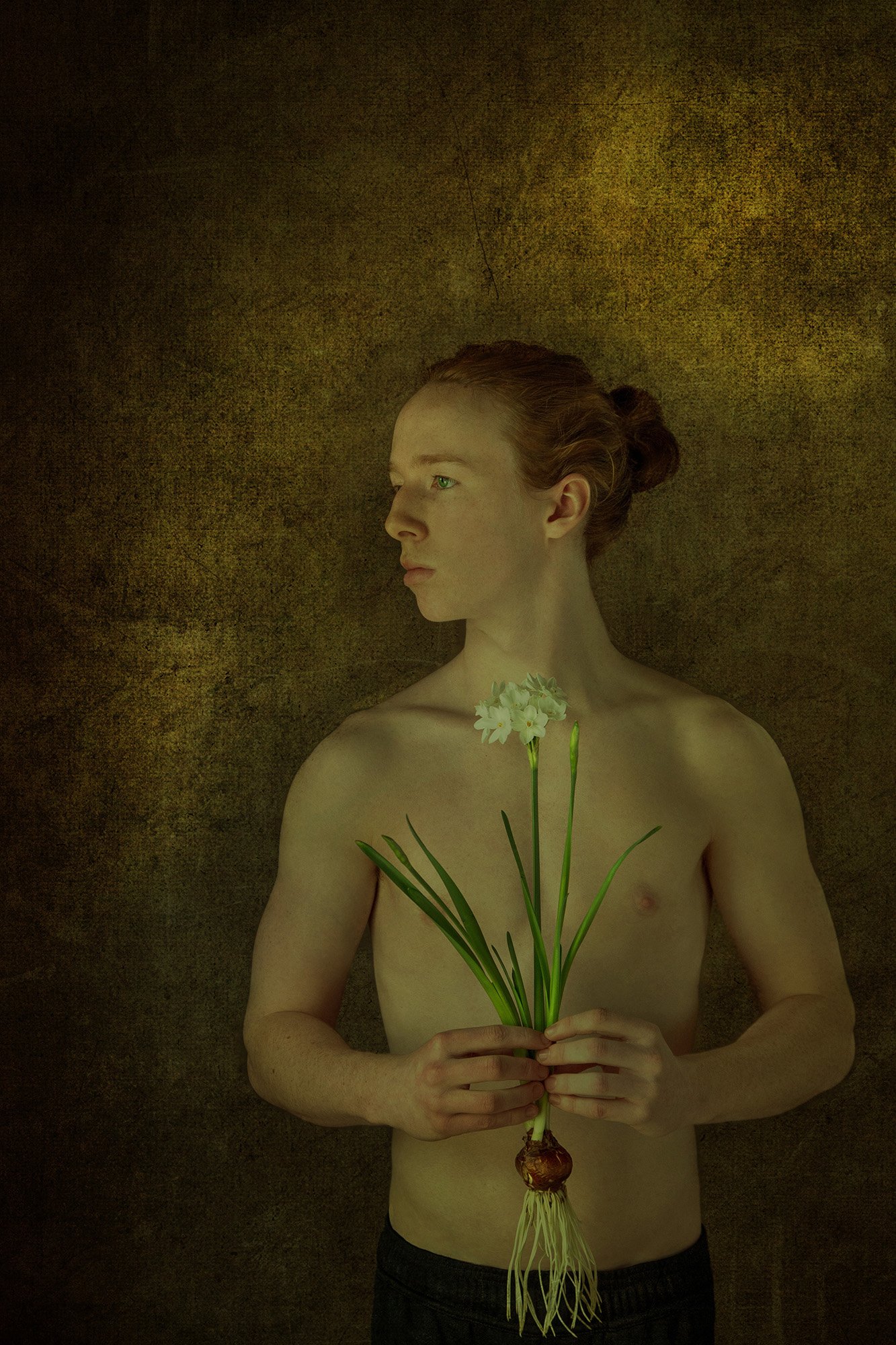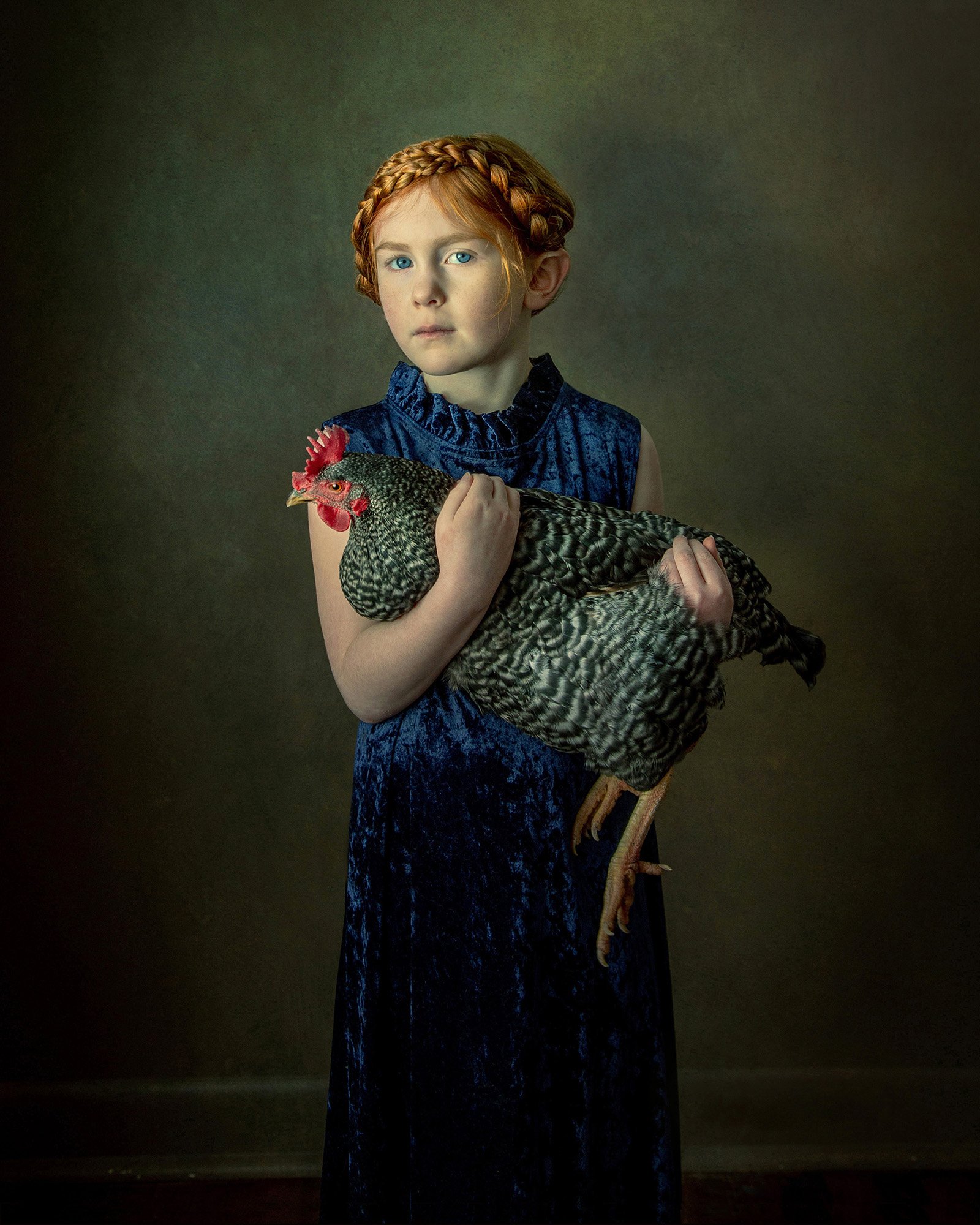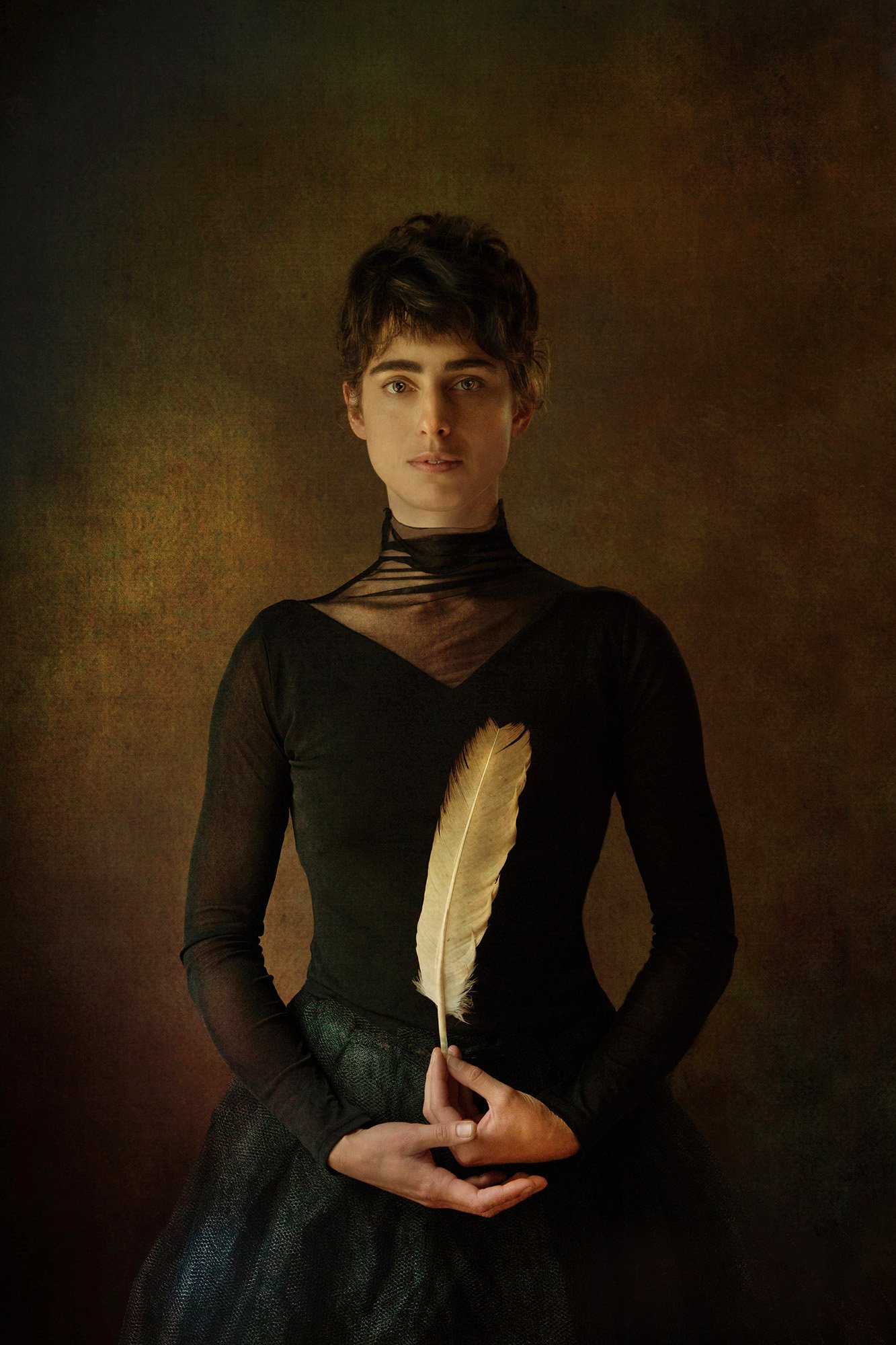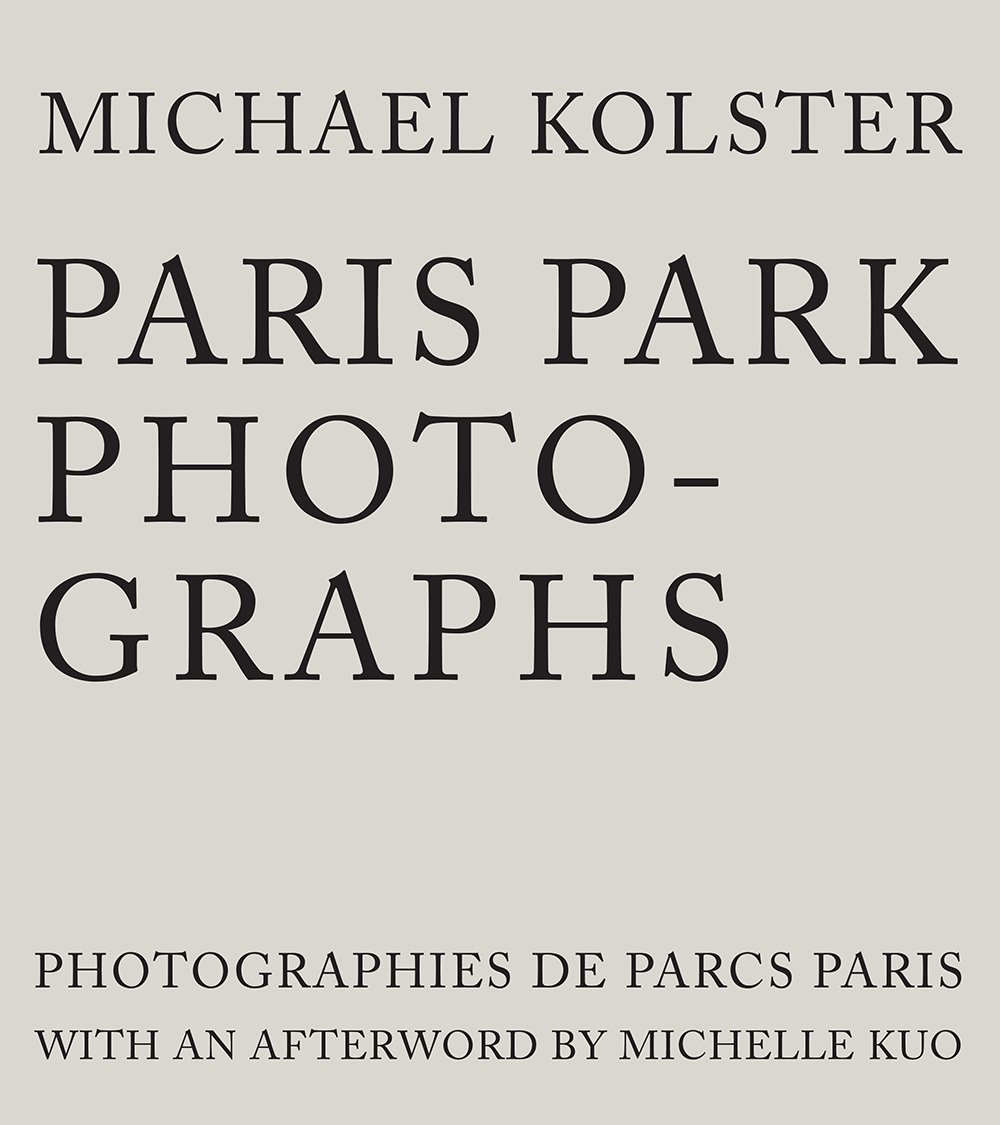Winter Light
If you haven’t donated yet to MMPA for the 2022 season, It’s not too late!
Featured Artist:
William Baker Rand
William Baker Rand, Modular Ava Gardner, 2000 - 2003, Acrylic, oil, oil stick, varnish, Coca-Cola, coffee, red wine, salt, eyeliner, glitter, spray paint, dirt, pencil, etc., Each panel is 36 x 36 inches
We were so fortunate to catch up with William Baker Rand as he was just finishing the final edits on his latest book, Rene | William Rand | New York Diaries. Through the whirlwind of New York’s art scene in the 1980s and 90s, William wrote notes and inspiration on scraps of paper documenting life and times with poet critic, René Ricard. These collected notes, sketches and photographs document a pivotal time in the artists’ lives as they navigated, survived and thrived during an unprecedented time in art history. Our feature touches on the many facets of William’s life and art-making around the world. Dive in and hang on. Read here.
Penumbrae
by John Updike (1932 - 2009)
The shadows have their seasons, too.
The feathery web the budding maples
cast down upon the sullen lawn
bears but a faint relation to
high summer's umbrageous weight
and tunnellike continuum—
black leached from green, deep pools
wherein a globe of gnats revolves
as airy as an astrolabe.
The thinning shade of autumn is
an inherited Oriental,
red worn to pink, nap worn to thread.
Shadows on snow look blue. The skier,
exultant at the summit, sees his poles
elongate toward the valley: thus
each blade of grass projects another
opposite the sun, and in marshes
the mesh is infinite,
as the winged eclipse an eagle in flight
drags across the desert floor
is infinitesimal.
And shadows on water!—
the beech bough bent to the speckled lake
where silt motes flicker gold,
or the steel dock underslung
with a submarine that trembles,
its ladder stiffened by air.
And loveliest, because least looked-for,
gray on gray, the stripes
the pearl-white winter sun
hung low beneath the leafless wood
draws out from trunk to trunk across the road
like a stairway that does not rise.
Felice Boucher
Light is photography. I went to visit a young photographer at her studio and she said that “old timers wait for the right light. They should just take the damn photograph and fix it in PhotoShop.” That broke my heart. It took me many years to understand light and to really see it. -FB
Felice Boucher, Winston, 2020, Inkjet print, 18 x 11 inches
I read the most fascinating stories/statements about the work of other artists. But beyond a love of light, graphic design, color and photography, I don’t have a lot to say about my own work. Between full time work and Covid I had not created much in the past two years. The absence of creating was leaving a deep sadness in my soul. So in the past couple of months I invited my neighbor Kaelyn, to pose for me and we ended up with one of her photographs gracing the cover of a book. Then I invited Henry back, whom I’d photographed when he was 13, that photograph hung several years ago at the Museum of Photographic Arts. It was fun to see how he had grown and changed. And I found a new model/muse, Margo, when I walked into the consignment shop of a friend—and there my new muse was sitting behind the counter. Much of myself is placed into each of my photographs. The models I choose to work with are those with soulful eyes and the confidence to look directly into my lens. I feel that connection of myself in them, looking back into the lens. — Felice Boucher
Felice Boucher, Clayton, 2019, Inkjet print, 17 x 11 inches
March 3rd Reception Thursday evening 5-7.00 PM
Addison Woolley Associated Artists have been exhibiting work together in Portland for over a decade in various venues.
Their work is far reaching and includes artwork and photography using various methods of digital and darkroom printing, painting and printmaking.
Karen Bushold, Dan Dow, Diane Hudson, Jim Kelly, Ruth Sylmor, Fran Vita-Taylor, Andrea van Voorst van Beest , Jan Pieter van Voorst van Beest and Dave Wade
For more information please visit www.zerostation.com
Jan Pieter van Voorst van Beest, Desire and Decadence, 2022, Inkjet print, 18 x 12 inches
Bernard C. Meyers
Bernard C. Meyers is an abstract contemporary artist inspired by the urban environment. His imagery explores the intersections of photographic realism and abstract expressionism. Mark Rothko’s and Richard Diebenkorn have both had a profound influence on his artwork.
Bernard C. Meyers, Between the Worlds, 1979, Plate Lithograph, on Arches Cover, 22”x30” Bernie is moving home to Maine soon, and has an upcoming exhibition at Cove Street Arts in December.
Forty-five years on I can divide my life as an artist into two parts, before digital and after. The tools change but my inquiry has not. How can I see the world with fresh eyes, how do I challenge and surprise myself? My process is cumulative, one move begets the next, lithograph, watercolor, mono-print, photograph, digital assemblage, these all feed the same insatiable beast. More often than not, I find myself within the veil, wandering the space between worlds. — Bernard C. Meyers
“IF YOU ARE ONLY MOVED BY COLOR RELATIONSHIPS, YOU ARE MISSING THE POINT. I AM INTERESTED IN EXPRESSING THE BIG EMOTIONS - TRAGEDY, ECSTASY, DOOM.” — MARK ROTHKO
Recent Acquisitions to the MMPA Collection: From Michael Kolster’s Paris Park Portfolio
This generous gift was made possible by Jeanne and Bill Press, Jennifer Press, Bobbi Frioli and Jane Wong.
Michael Kolster, Parc Montsouris (2fr4_5), 2017, Archival pigment print 1/20, 10 x 20 inches
Paris Park Photographs
Michael Kolster
The MMPA collection will expand again with six prints from Michael Kolster’s Paris Park Photographs series. This generous gift has been arranged by Jeanne and Richard Press and is being made by Bill Press, Jennifer Press and Bobbi Frioli, and Jane Wong. While working though the selection process we checked in with Michael about his upcoming book, Paris Park Photographs and discovered that a selection of these photographs is on view at Cove Street Arts as part of the Faculty Photography II show, curated by Bruce Brown. An opening reception will be held Saturday, February 26, 1:00 - 3:00 pm. On view February 24th through April 16th, this show will also include works by Elke Morris, Gary Green, Luc Demers, Dee Peppe, Peter Precourt, Ann Bartges and Dawn Nye.
For the Paris Park Photographs Michael explored several parks and gardens in and around Paris allowing himself the time to wander from formal sculpted gardens out to the unkempt edges. As Michael followed in the footsteps of Eugene Atget though modern-day Paris, he was reminded of Atget’s documentation of the city before its great transformation around the turn of the century. At that time, Atget eschewed the convenience of the small format film cameras of the day to continue making photographs using a slow, thoughtful approach while encumbered with a large format view camera and glass plates. Michael also chose to leave the latest digital technology behind to make his images on medium format black and white film. This conscious choice liberated him from the impulse to review digital images immediately in the field. With this intent, Michael could devote his full attention to the environment and find that meditative quality of being entirely present in the moment. What better way to explore the most beautiful city. With this heightened awareness, Michael’s attentive eye brings the viewer to see the choreography of the sculpted gardens as they transition from formal design to natural landscape. It is an intimate view that can only be witnessed by slowing down to observe carefully, with thoughtful intent.
In Michael Kolster’s photographs, we behold the magnificence of a knotted old oak, its creaturely, otherworldly presence. Our eyes follow an allée of pruned trees in Parc de Sceaux, their arrogant geometry on display. A brick rampart. Daffodils poking out of tall grasses. Dark, shapely boughs curving this way and that, meandering and twisting. These photographs reward extended looking.
— Michelle Kuo
The afterward, written by Michelle Kuo in 2021 provides the perspective of an American living in Paris, while experiencing the city and its parks during the unprecedented time of the COVID-19 pandemic. Through her familial experience of emerging from months of lockdown, drawn to open spaces such as Paris’ parks with an acute awareness of the value and importance of our connection to the land, Michelle reflects upon our collective experience of this time in history. Through Michelle’s perspective we are also given a glimpse of the parallels between the transformative experience of today’s world to that of Walker Evans’ documentation of the Eastern United States, which was also at a time of profound transformation in the 1930’s.
Paris Park Photographs is Michael’s third book made with George F. Thompson Publishing and is sure to be another handsome edition. Due to be released March 7th, it be pre-ordered through Amazon.
“My father didn't think being an artist was a respectable or worthy goal for a man. He hoped I would see my way to more serious work and would find myself turning towards medicine, law, or business.” — Richard Diebenkorn
Robert Diamante
Robert Diamante, Apples, 2003 -2006, inkjet print, 24 x 20 inches
I was already an exhibiting photographer (see Apples, Deer Head, Fisher Cat), when I began studying at the Bangor Theological Seminary. Invested to marry my art practice with this new era of theological study, in 2003 I began exploring still life photography from another angle. The work of Juan Sánchez Cotán, as well as other Spanish Baroque artists, were my inspiration. I marveled how their paintings appeared to be mystical meditations using ordinary objects as vehicles. Using items found on the way into my studio (and rotting in my refrigerator), I began a series of large format photographs. My goal was to investigate the possibilities of transcendence within the ordinary; objects going beyond their “objectivity.” To varying degrees the exploration was a success. In 2006 a series of these still life photographs were exhibited at a gallery in Portland. An acquaintance that I had not seen in several years came to the opening. He looked around, smiled at me, then left without a word. The next day he called me to ask if I would photograph him in the same manner as my still lives. Within a week Chan was in front of my camera, and the series of photographs shown here was created. Chan had been a dancer. During the shoot we talked about the transformation that our bodies undergo as we move from one phase in life to another. We talked about his body changing, his transfiguration, as a celebration—as something beautiful occurring. Two weeks later he died. I consider his photographs to be the apotheosis of my still life exploration. — Robert Diamante
All of these images were made between 2003-2006. The are printed as inkjet prints and are 24 x 20 inches
A Color of the Sky
by Tony Hoagland (1953 - 2018)
Windy today and I feel less than brilliant,
driving over the hills from work.
There are the dark parts on the road
when you pass through clumps of wood
and the bright spots where you have a view of the ocean,
but that doesn’t make the road an allegory.
I should call Marie and apologize
for being so boring at dinner last night,
but can I really promise not to be that way again?
And anyway, I’d rather watch the trees, tossing
in what certainly looks like sexual arousal.
Otherwise it’s spring, and everything looks frail;
the sky is baby blue, and the just-unfurling leaves
are full of infant chlorophyll,
the very tint of inexperience.
Last summer’s song is making a comeback on the radio,
and on the highway overpass,
the only metaphysical vandal in America has written
MEMORY LOVES TIME
in big black spray paint letters,
which makes us wonder if Time loves Memory back.
Last night I dreamed of X again.
She’s like a stain on my subconscious sheets.
Years ago she penetrated me
but though I scrubbed and scrubbed and scrubbed,
I never got her out,
but now I’m glad.
What I thought was an end turned out to be a middle.
What I thought was a brick wall turned out to be a tunnel.
What I thought was an injustice
turned out to be a color of the sky.
Outside the youth center, between the liquor store
and the police station,
a little dogwood tree is losing its mind;
overflowing with blossom foam,
like a sudsy mug of beer;
like a bride ripping off her clothes,
dropping snow white petals to the ground in clouds,
so Nature’s wastefulness seems quietly obscene.
It’s been doing that all week:
making beauty,
and throwing it away,
and making more.




